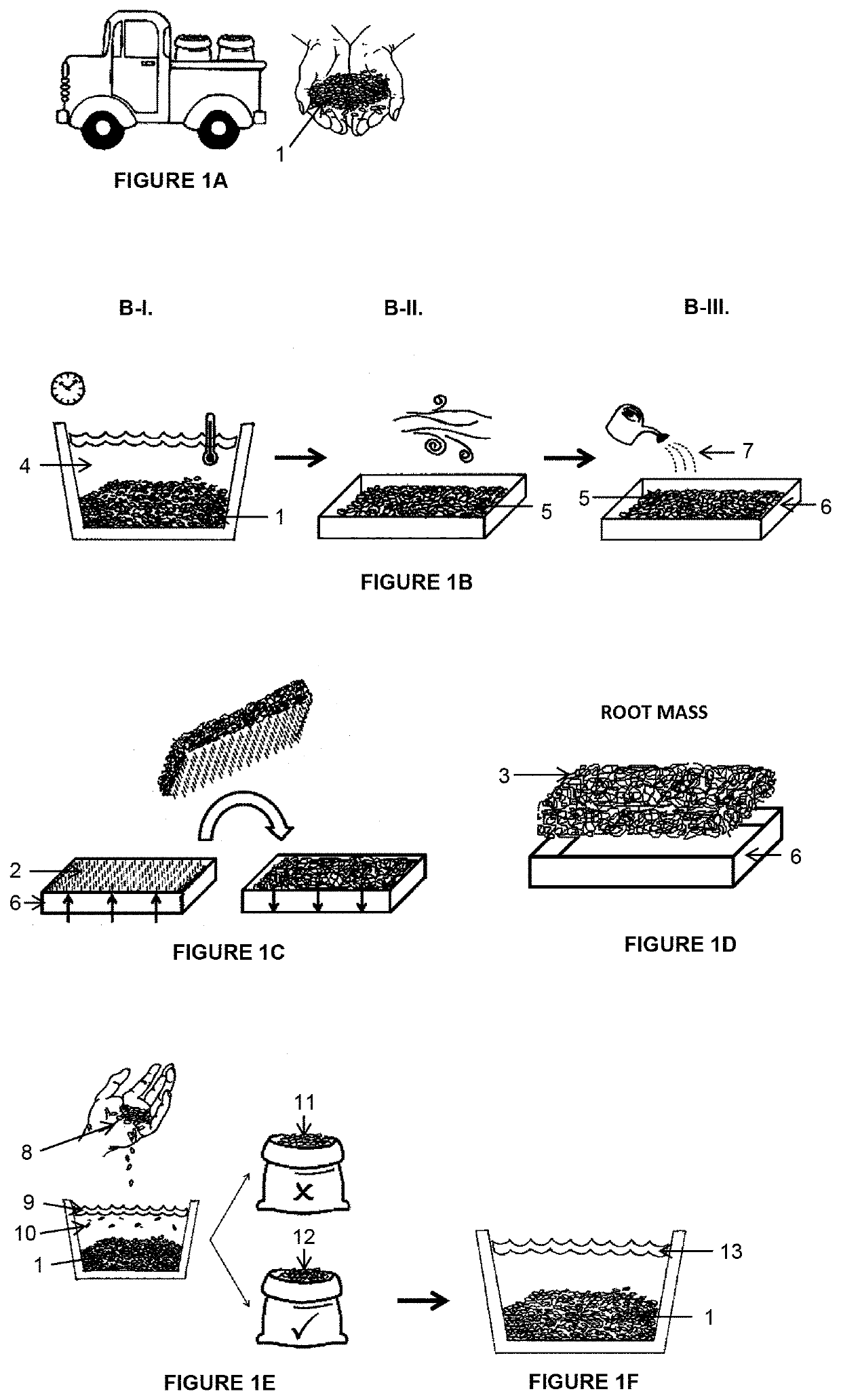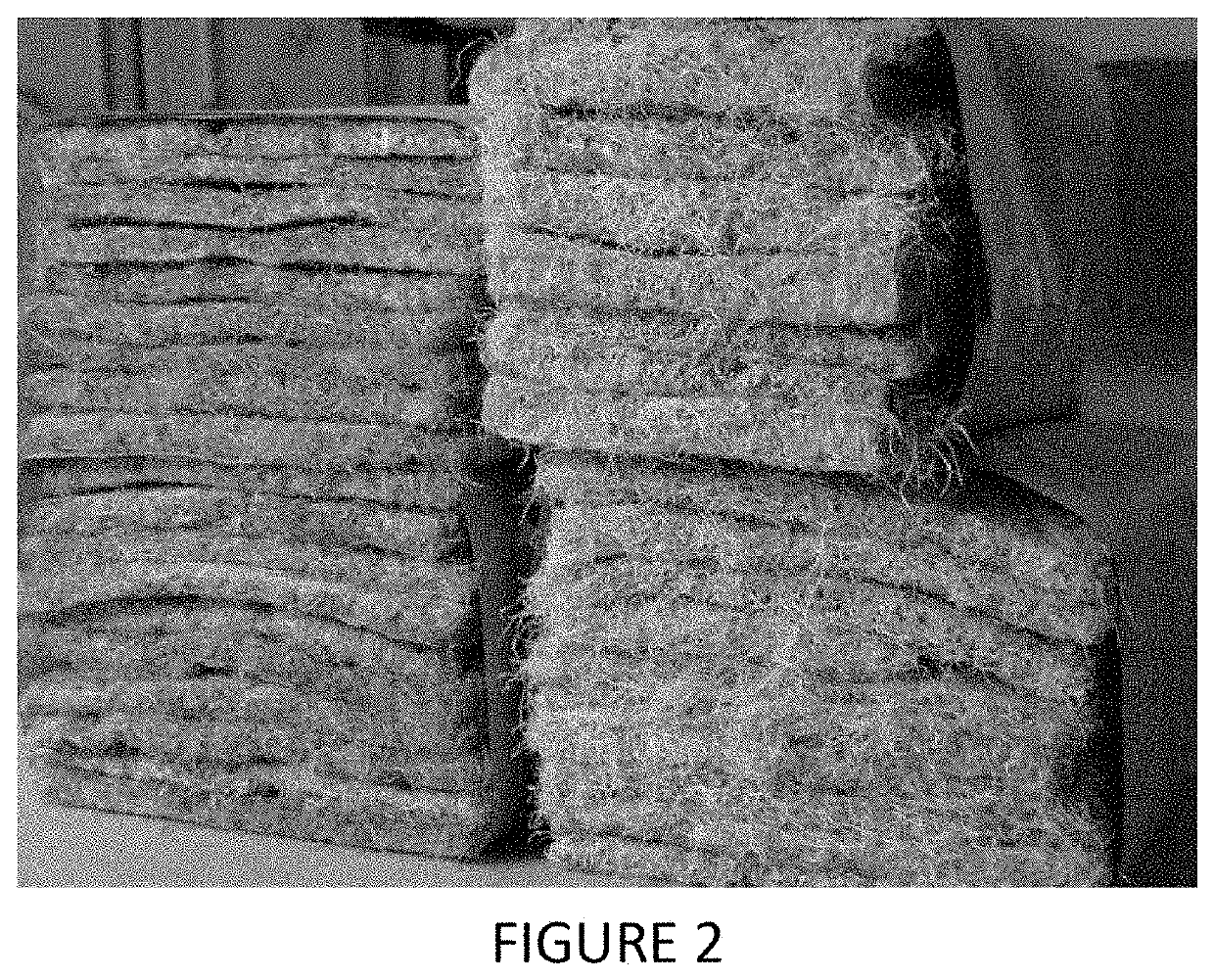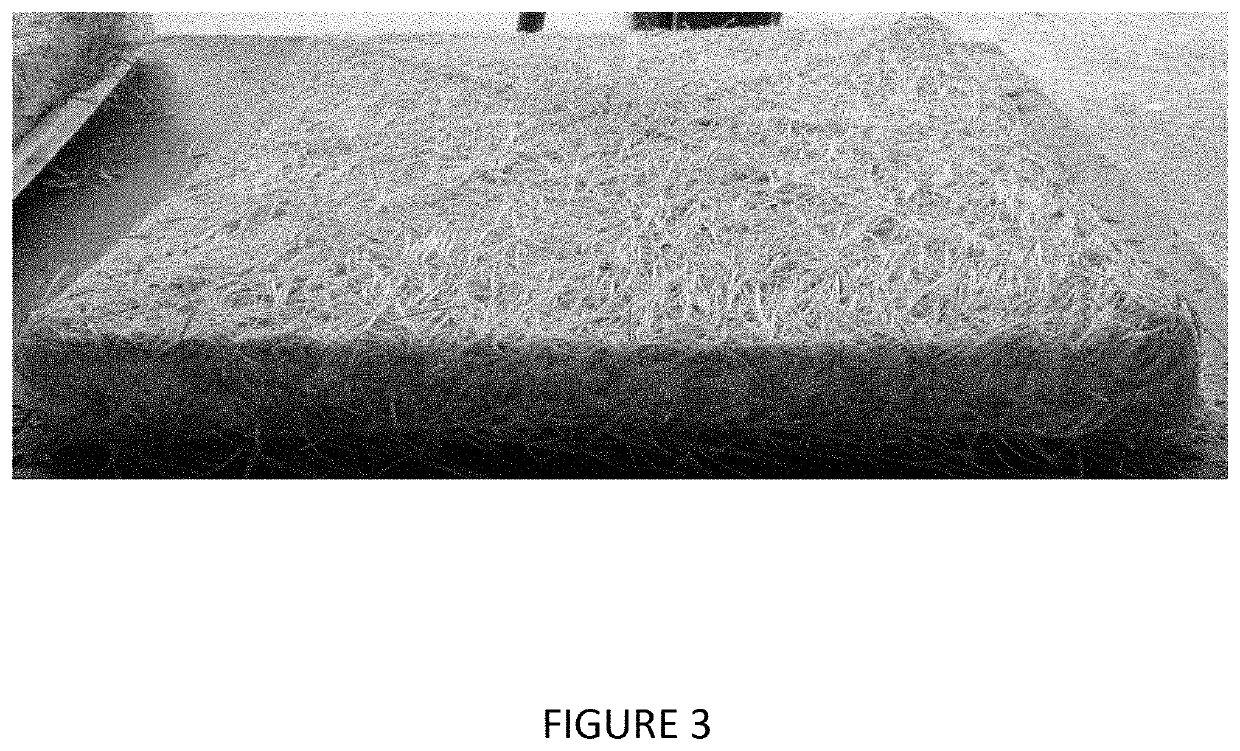Method for obtaining root mass from vegetable seeds and root mass obtained thereof
a technology of vegetable seeds and root mass, applied in the field of agriculture, can solve the problems of increasing the production cost of raw materials, scarce natural resources, and less knowledge about the use of roots of plants
- Summary
- Abstract
- Description
- Claims
- Application Information
AI Technical Summary
Benefits of technology
Problems solved by technology
Method used
Image
Examples
example 1
of Root Mass from a Hydroponic Culture of Oat Seeds
Selection of Seeds:
[0033]Quality of oat seeds was checked and the level of impurities present was determined. Small amounts of seeds were taken randomly from different bags to complete a sample of a kilogram of seeds. Sample was immersed in water, manually stirred, and the number of empty seeds and impurities which remained floating in the water was determined. The percentage of impurities was less than 20%, so the seed bags were suitable for planting purposes.
Disinfection of Seeds:
[0034]Once seeds were selected suitable for sowing, they were then washed in a solution of bleach (chlorine 10% p / v) for 3 to 5 minutes. Then, seeds were rinsed with water enough to remove disinfection solution.
Soaking:
[0035]In a container with oxygen, the disinfected seeds were immersed in water for 24 hours at a temperature of 15 degrees Celsius.
Aeration of Seeds:
[0036]Seeds were placed in open containers to be in contact with atmospheric air, keeping t...
example 2
on of a Pressed Sheet of Root Mass
[0039]From the root mass obtained in Example 1 it was carried out the water elimination process by means of the following operations:
Drainage:
[0040]The root mass was drained and allowed to rest about an hour in a grid to remove water naturally by gravity. Additionally, it was centrifuged for about 1 minute, whereby another part of water and non-germinated seeds were eliminated.
[0041]The reticular mass was slowly dried in the sun for about 12 hours to obtain a root mattress with approximately 10% moisture. Once the drying step finished, this mattress was weighed and measured.
Adhesive Application:
[0042]A sufficient amount of adhesive was applied to the dry root mattress, depending on its weight and / or volume thereof and / or the manufacturer instructions of the adhesive. Since the root mattress is a porous body, twice the amount indicated by the manufacturer per square meter was applied.
[0043]The adhesive was applied to the root mattress, ensurin...
example 3
Pressed Sheet Obtained from the Root Mass as Acoustic and Thermal Insulating Material
[0045]The pressed sheet obtained from the produced root mass (PSRM) from the previous example exhibited excellent characteristics such as thermal and acoustic insulation. It is 100% natural, biodegradable, renewable, fast to produce, fire resistant, and also demonstrated a superior or equal thermal capacity when compared to those used in the industry, produced mainly from petroleum. Since the mattress is thermally more efficient, the same properties as similar products in the market were obtained, but with the advantage of having a much inferior thickness, which substantially facilitates and economizes transfer and storage.
[0046]Acoustic absorption coefficient (α) of sheet obtained by the method of the invention was determined according to standard ISO 10354-2:1998: “Acoustics-Determination of sound absorption coefficient and impedance in impedance tubes—Part 2: Transfer-function method”. The measur...
PUM
 Login to View More
Login to View More Abstract
Description
Claims
Application Information
 Login to View More
Login to View More - R&D
- Intellectual Property
- Life Sciences
- Materials
- Tech Scout
- Unparalleled Data Quality
- Higher Quality Content
- 60% Fewer Hallucinations
Browse by: Latest US Patents, China's latest patents, Technical Efficacy Thesaurus, Application Domain, Technology Topic, Popular Technical Reports.
© 2025 PatSnap. All rights reserved.Legal|Privacy policy|Modern Slavery Act Transparency Statement|Sitemap|About US| Contact US: help@patsnap.com



